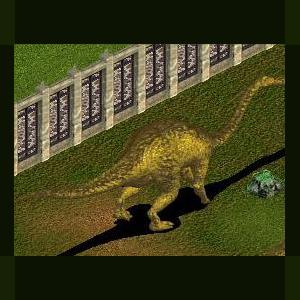About This File
Opisthocoelicaudia
Opisthocoelicaudia (from Greek opisthe [back], koilos [hollow], and Latin cauda [tail], meaning posterior cavity tail) was a 39 foot-long (12 meter) sauropod of the Late Cretaceous Period discovered in Mongolia in 1965 by Polish and Mongolian scientists in the Gobi Desert (in the Cretaceous, Mongolia wasn't all desert: it also had lush jungles and murky marshes, which Opisthocoelocaudia might have waded in). It was described and named in 1977 by Borsuk-Bialynicka as a new type of camarasaur, but studies such as Salgado and Coria (1993) find it to be a saltasaurid titanosaur instead. Its skull and neck were missing and its carcass had apparently been buried before disintegrating. Borsuk-Bialynicka suggested tyrannosaurid scavengers had fed on the carcass, eating the head and neck and leaving noticeable tooth marks on the pelvis and femur. Scientists cannot be sure what its head or neck looks like, because neither was ever recovered.
Skeletally, it is generally similar to most other titanosaurs. It has, however, unique joints in the tail vertebrae which account for its unusual name. Each of the thirty four tail vertebrae has a large dome on the front and a deep hemisperical socket on the posterior, creating a series of strong ball-and-socket joints. There is also notable evidence of immense ligament and muscle tissue attached to the tail. The tail thus tends to slant slightly upwards, not downwards as in other sauropods. The suggestion has been that the tail was used as a prop to form a tripod with its back limbs for a feeding position.
Opisthocoelicaudia has appeared on stamps in its homeland of Mongolia and in the Republic of Guinea.



Recommended Comments
There are no comments to display.
Create an account or sign in to comment
You need to be a member in order to leave a comment
Create an account
Sign up for a new account in our community. It's easy!
Register a new accountSign in
Already have an account? Sign in here.
Sign In Now